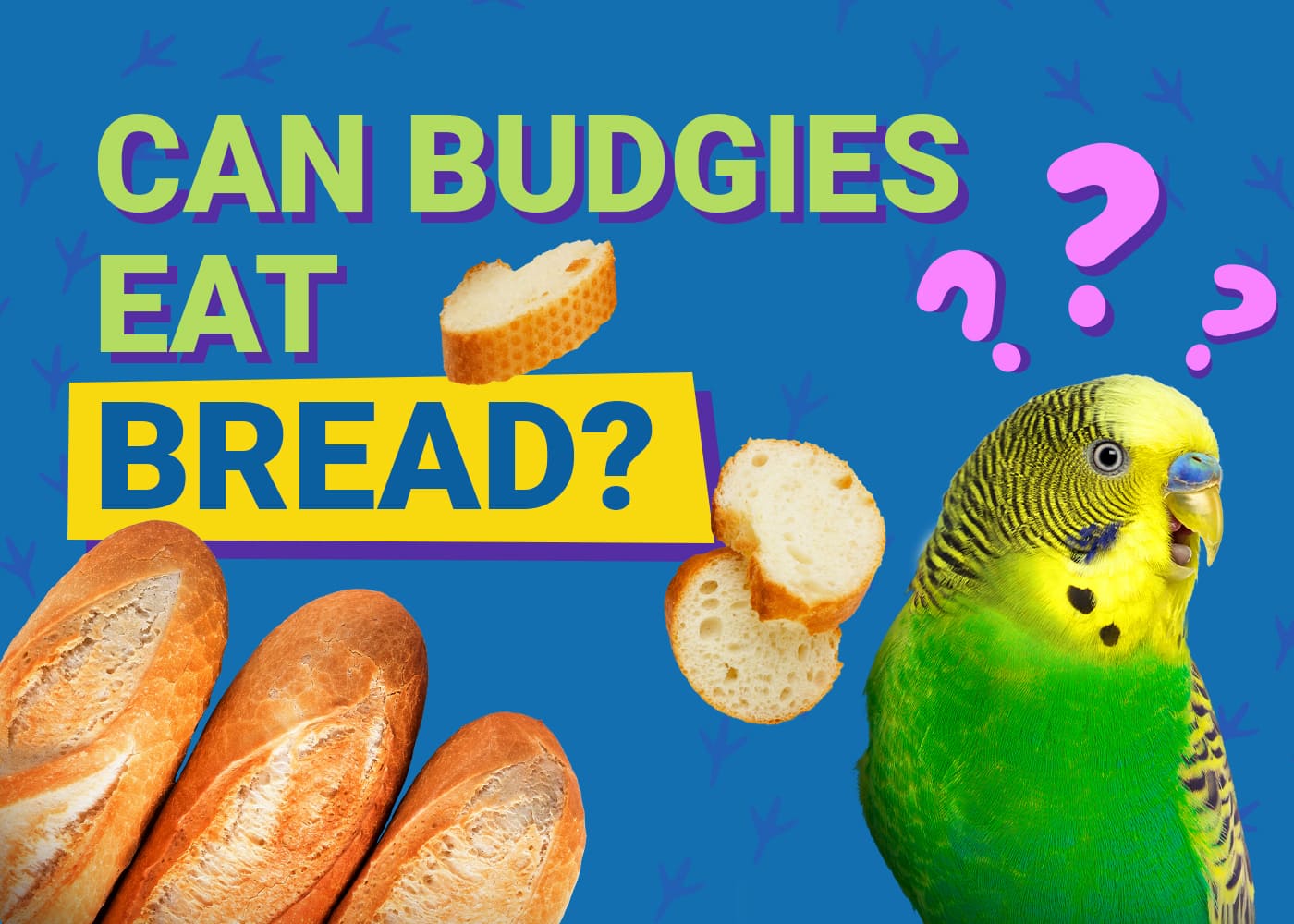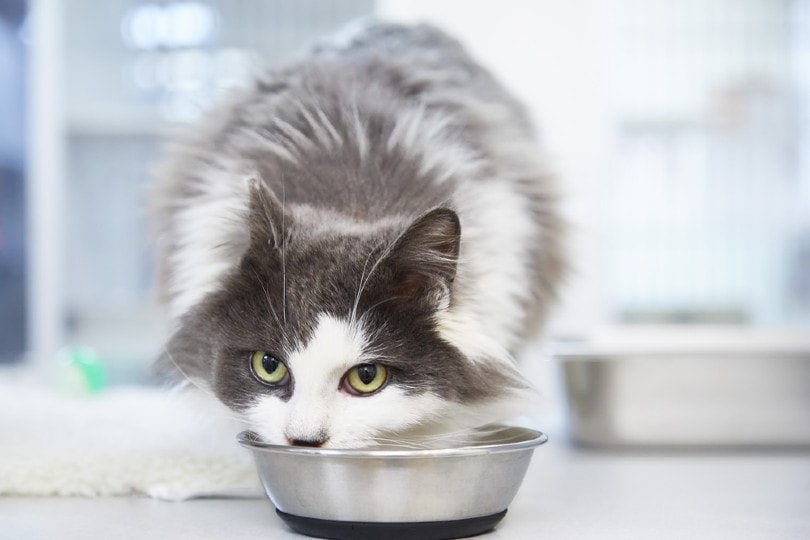VET APPROVED

The information is current and up-to-date in accordance with the latest veterinarian research.
Learn more »Feeding pet rats is surprisingly tricky. On the one hand, they’re not picky, their food is easily acquired, and their diets can be supplemented with so many different things. If you have a pet rat, you probably are already well aware that these inquisitive rodents love to share whatever you’re eating. On the other hand, though, not everything a pet rat is willing to eat might be good for them.
Since rats love to try new things, they’re usually happy to take anything that they’re offered. Handing the crust of your toast to your rat might delight the little one, but is it okay to do? Is bread safe for rats to eat? The short answer is usually yes, but with some considerations. Let’s find out how bread can be safely added to your furry friend’s diet.

Natural Diet of a Rat
In the wild, rats eat anything that they can find. They’re opportunistic omnivores and have a keen sense of smell. As such, they’re not picky eaters and will readily eat whatever they can scavenge or hunt. This makes sense given how rats are prey for so many other animals; having a highly varied diet offers them the best chance of survival and success as a species. It is also part of the reason why rats have been so successful in many different environments around the world.
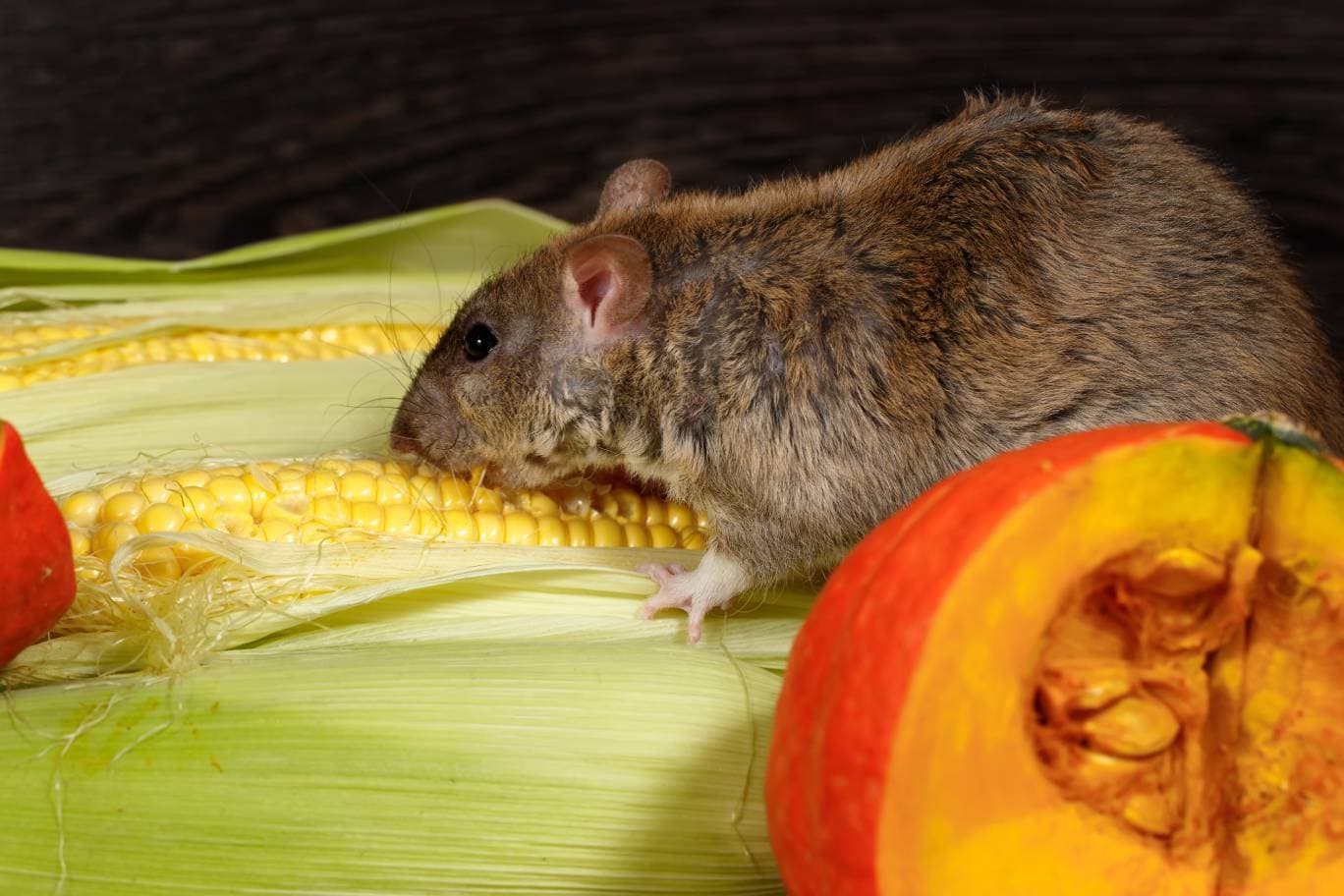

Diet of a Pet Rat
Pet rats don’t have to forage for their food, so it’s our job to give them everything that they need. However, pet rats do retain their instinct to opportunistically gorge whenever the opportunity arises.
Most bread is safe for pet rats and is surely something an urban rat wouldn’t pass up on. However, feeding your pet bread on a daily or frequent basis, or in high amounts, may lead to a very obese pet rat.
The current dietary recommendation for pet rats is as largely composed of the following:
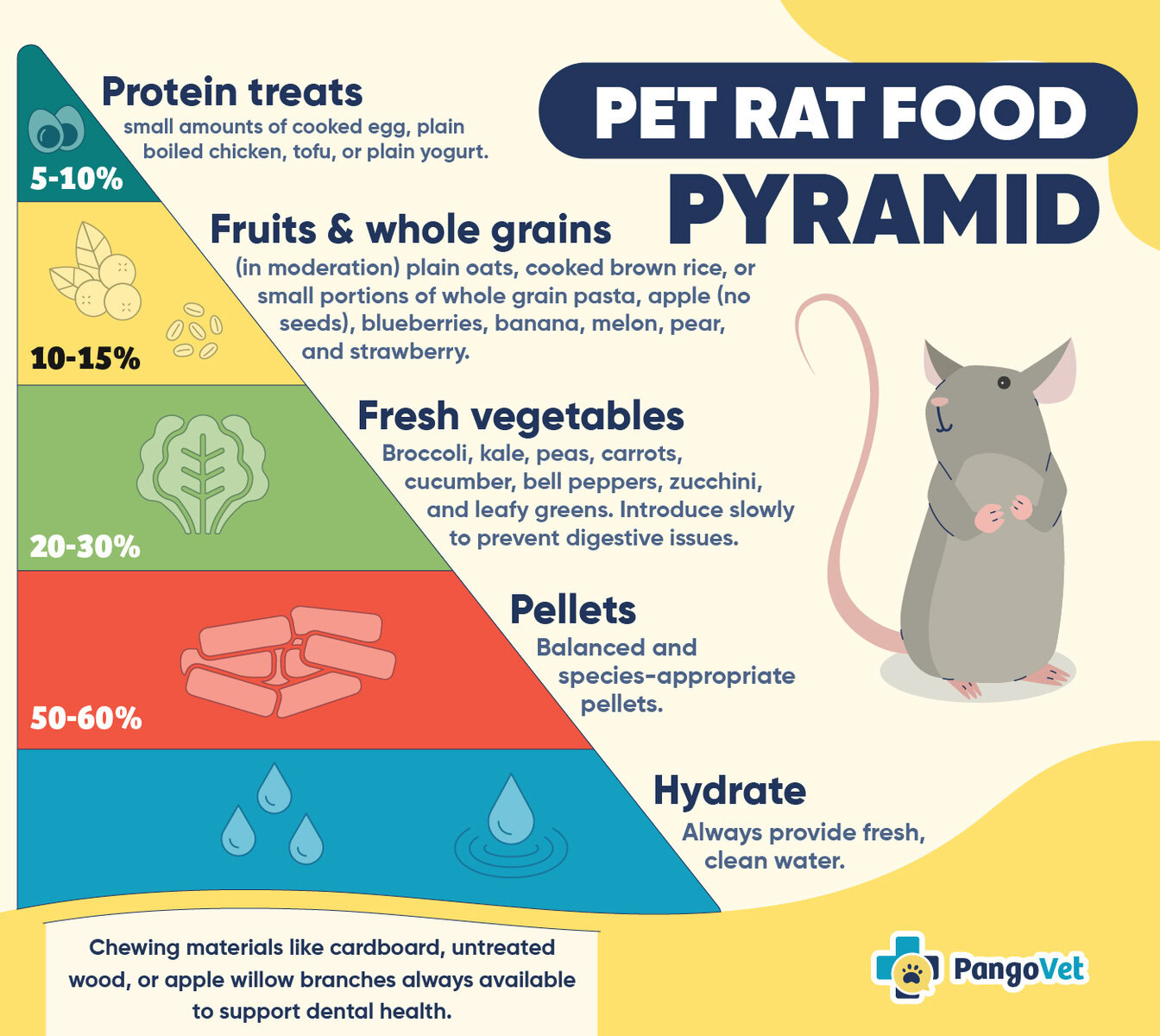
Pellets
Pet rats should eat pellets as their primary food. This should constitute around 60 to 70% of their diet. Pellets are preferred over seeds, grains, and other food items because a rat would quickly learn to pick and choose their favorite options from a seed or grain mix. Pellets also help with weight management for a pet rat, which is a very challenging aspect of their care.
Notably, you should not use lab rat pellets for adult pet rats. Though lab rat pellets might be appropriate for a pregnant, lactating, or juvenile rat, they often contain too much fat to be warranted as a dietary staple for an adult rat.
Fiber Options
Fiber options are the preferred food item to round out your pet rat’s diet, as these help tremendously with weight management. Examples include most dark, green leafy vegetables, carrots, or hay.
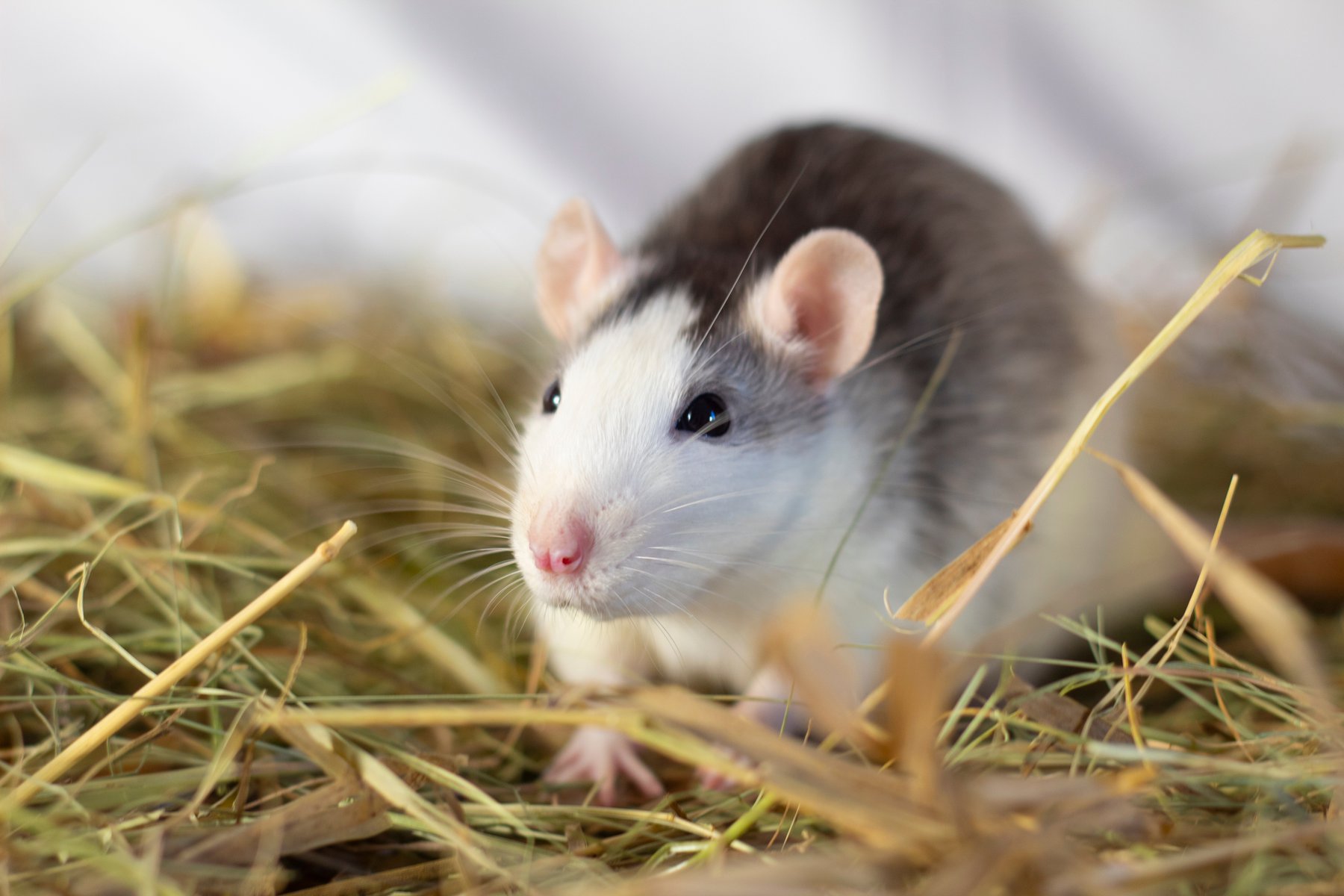
Treats
Fruit, grains, cereals, seeds, and nuts are classified as treats for pet rats. They should only be offered on rare occasions (if at all) and are not advised on a long-term basis, as they quickly lead to an overweight pet.
What About Bread?
Most bread falls in the category of “treats” for a pet rat. However, some healthier bread options, such as a high-fiber bread with minimal additives, can be considered a fiber option for your pet. In essence, the term “bread” is too generic to make a dietary recommendation for your rat. You would have to look at the type of bread you’re considering adding to your pet rat’s diet.
As a general guideline, savory breads would be safer for a pet rat over sweet breads. In addition, you should not offer your pet any bread with the following ingredients:
- Any bread that has expired or is beyond its “best by” date
- Raisin bread
- Chocolate bread
- Any sweet bread (may include white bread)
- Breads high in sugar (includes most commercial options in the US)
It’s important to keep in mind that the list above isn’t exhaustive. Additionally, not all of the breads mentioned in this list are toxic for pet rats.
Interestingly, the laws pertaining to food vary from country to country. For instance, many food items labeled as “bread” in the US cannot be labeled as such in the EU due to the high amounts of sugars found in them. Therefore, if you’re ever in doubt about the inclusion of bread in your pet rat’s diet, it’s always best to seek clarification from your veterinarian.
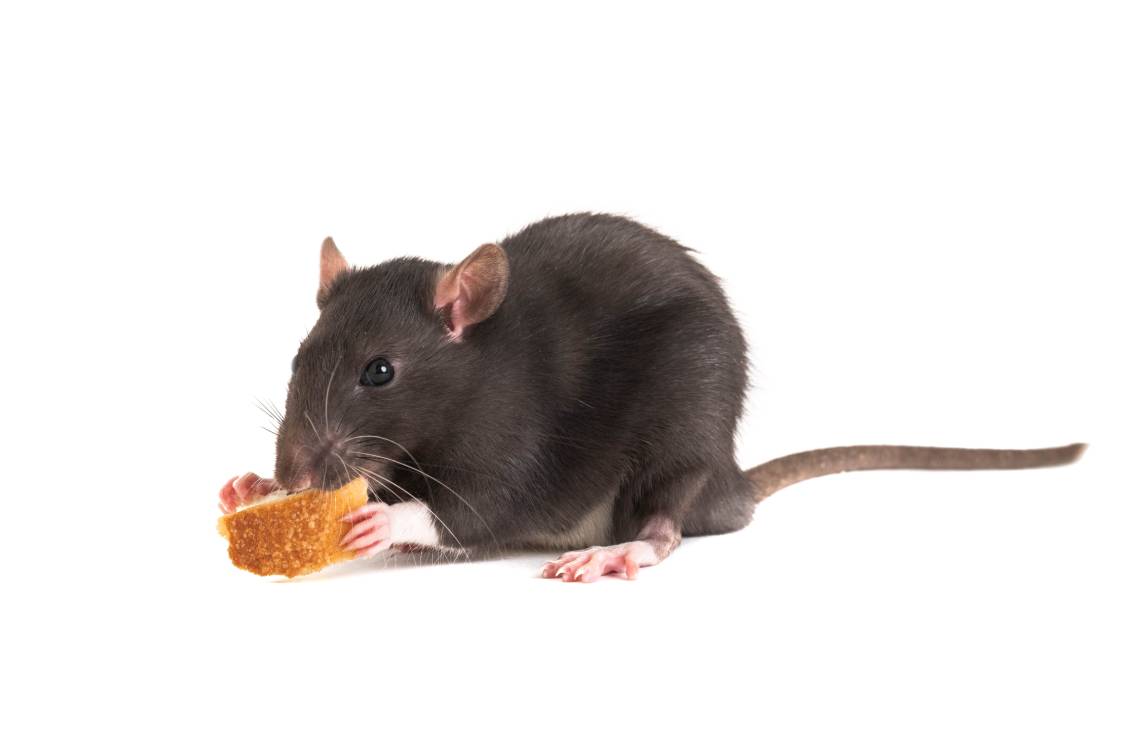

Final Thoughts
In most instances, pet rats love any food that you want to give them and are happy to try new things. However not all food is good for them. Bread is somewhat vague, as the decision to include it in your pet’s diet would depend on several factors, including knowing what type of bread you wish to offer your pet.
As a general guideline, though, it’s best to seek clarification from your veterinarian if you’re ever in doubt about your pet’s nutritional needs.
Related Reads:






